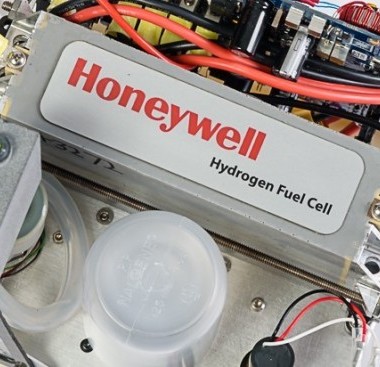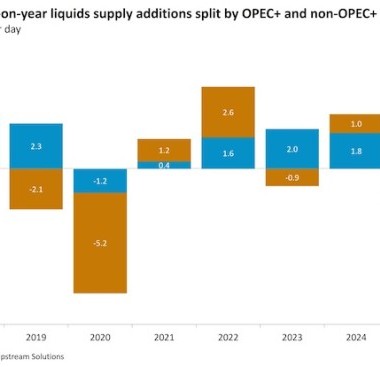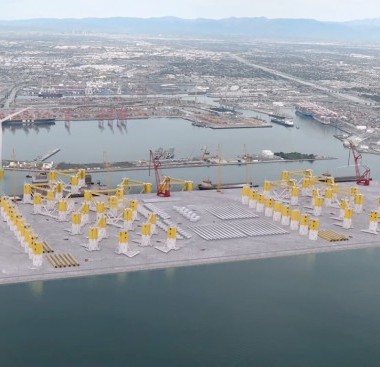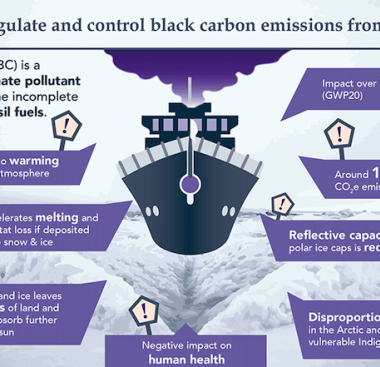Energy
Energy industry news - solar, wind, hydroelectric, natural gas, petroleum.

Supplying Asia with LNG got much costlier for the US, but strong demand brings export records
| June 23, 2021 | Energy
Supplying liquefied natural gas to the growing Asian market has become more expensive for US producers this year, a Rystad Energy report reveals.
MOL starts research and development on large-scale liquefied CO2 Carrier
| June 22, 2021 | Energy | Alternative | Maritime | Technology

US natural gas exports and non-power sector demand to drive higher prices through 2022
| June 22, 2021 | Energy
In our June 2021 Short-Term Energy Outlook (STEO), we forecast U.S. natural gas prices to increase during 2021 and 2022 from 2020 prices as a result of expected growth in natural gas consumption and natural gas exports that outpace expected growth in production and imports. We also forecast the 2021 Henry Hub natural gas spot price to average $3.07 per million British thermal units (MMBtu), an increase of $1.04/MMBtu from the record lows of 2020.
China private refiners see deep cuts to import quota amid probe
| June 21, 2021 | Energy
Some Denver gas stations ran short of fuel in supply kink
| June 21, 2021 | Energy

WiSP2 project launched to further improve performance predications, rules and regulations for wind propulsion on commercial ships
| June 21, 2021 | Energy | Alternative | Maritime | Technology
MARIN and ABS have kicked off the WiSP2 Joint Industry Project to help facilitate the broad uptake of wind propulsion as an important tool to decarbonise shipping.

DNV completes successful concept verification review of Odfjell Oceanwind’s WindGrid™ floating wind power system
| June 21, 2021 | Energy | Alternative
DNV, the world’s leading classification society, has completed a concept verification review of Odfjell Oceanwind’s WindGrid™ (WindGrid) system for Mobile Offshore Wind Units (MOWUs). DNV’s review confirms the technical feasibility of the WindGrid system, and that expected reductions in CO2-emissions for North Sea applications are in the range of 60-70%, compared to generation of electricity from conventional gas turbines.

Velocys technology powers first commercial flight using SAF derived from gasified wood-chips
| June 21, 2021 | Air Cargo | Technology | Energy | Alternative
Velocys, the sustainable fuels technology company, is pleased to announce that sustainable aviation fuel (SAF) produced by the Company’s proprietary technology using woody biomass residue feedstock has been used in a commercial flight for the first time by Japan Airlines.

February’s increase in coal-fired electric generation reduced US coal stockpiles
| June 21, 2021 | Energy
Coal stockpiles at U.S. power plants decreased significantly from December 2020 to February 2021, including a draw of nearly 16 million tons in February 2021. February’s draw was the largest monthly coal inventory decrease since July 2011, when stocks were drawn down by 18 million tons.
Venezuela oil czar says output to skyrocket, sanctions be damned
| June 21, 2021 | Energy
China private refiners get less oil-import quota in latest issue
| June 21, 2021 | Energy
Adani loses $13 billion in four days in worst wealth rout
| June 18, 2021 | Energy | Alternative | Ports & Terminals
China’s oil boomtown braces for crackdown from Beijing
| June 18, 2021 | Energy

US dry natural gas production and rig count continue to grow from pandemic lows
| June 17, 2021 | Energy
Our June Short-Term Energy Outlook (STEO) estimated that production of dry natural gas in the United States averaged 92.2 billion cubic feet per day (Bcf/d) during May 2021, compared with 87.8 Bcf/d in May 2020.

A Rystad Energy investigation: How a push to reduce LNG vessel emissions leaves the planet worse-off
| June 17, 2021 | Energy | Maritime | Technology
Global efforts to reduce carbon emissions are accelerating and most industries are searching for new ways to reduce their carbon footprint in the years and decades to come. Shipping is also under scrutiny and the International Maritime Organization (IMO) has set a carbon intensity reduction target, proposing strict technical requirements that are scheduled to be approved this year and take effect from 2023. One of the effects of these new requirements is likely to involve slow-speeding – a reduction of the maximum cruising speed of deep-sea vessels in a bid to reduce emissions.
VivoPower International PLC completes $120m definitive Canadian distribution agreement for Tembo electric light vehicles
| June 17, 2021 | Energy | Alternative
Dirty ship fuel is getting a boost from Beijing and hot weather
| June 17, 2021 | Energy
Adani share tumult deepens with some diving by daily limit
| June 17, 2021 | Energy
Oil rises again on US crude stocks build projections - Rystad Energy comments
| June 16, 2021 | Energy | Conventional | By The Numbers
© Copyright 1999–2024 American Journal of Transportation. All Rights Reserved





